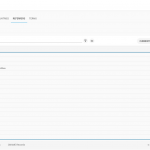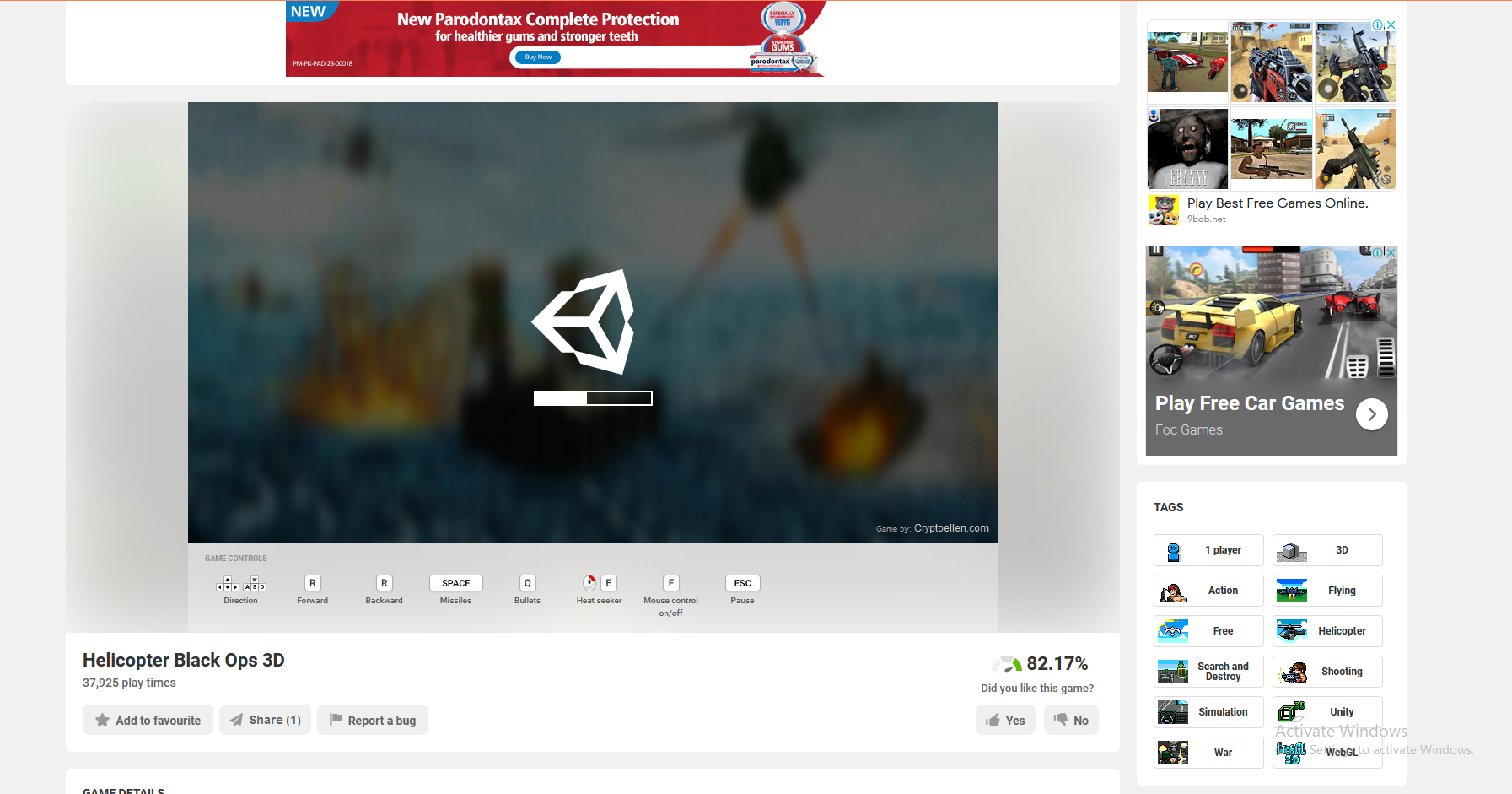Introduction: Welcome to the exhilarating world of multiplayer car racing game development! In "Racing Beyond Limits: Mastering Multiplayer Car Racing Games," we embark on a journey through the intricate process of creating, refining, and launching your very own multiplayer racing sensation. Whether you're a seasoned developer seeking to expand your repertoire or a novice eager to dive into the vibrant realm of game development, this comprehensive guide provides the essential knowledge and practical insights to turn your vision into reality.
With over a decade of experience in the gaming industry, we've curated a wealth of expertise to empower you on your creative voyage. From mastering the nuances of network movement to sculpting captivating environments and integrating competitive features like highscore boards and leaderboards, each chapter is meticulously crafted to equip you with the tools and techniques needed to craft immersive and thrilling racing experiences.
So, buckle up and prepare to accelerate into the world of multiplayer car racing game development. Let's race beyond limits and unleash the full potential of your creativity!
Chapter 1: The Essence of Multiplayer Racing
Multiplayer car racing games are more than just a genre; they're an adrenaline-fueled symphony of competition, strategy, and camaraderie. In this chapter, we delve into the core principles that define the essence of multiplayer racing, exploring the thrill of real-time competition, the importance of seamless connectivity, and the dynamic interplay between skill and strategy.
At its heart, multiplayer racing encapsulates the essence of human competitiveness, offering players the opportunity to test their skills against opponents from around the globe. Whether it's a head-to-head showdown or a frantic battle royale, the thrill of overtaking rivals and crossing the finish line first is a sensation like no other.
But beyond the thrill of victory lies the intricate tapestry of strategy and skill. Successful multiplayer racing isn't merely about raw speed; it's about mastering the nuances of track design, understanding the strengths and weaknesses of each vehicle, and executing split-second decisions with precision and finesse.
Central to the multiplayer racing experience is the concept of connectivity. In a world where players are constantly connected, the ability to race against friends, rivals, and strangers alike adds an extra layer of excitement and immersion. Whether it's collaborating with teammates to secure victory or engaging in heated rivalries with adversaries, the social dimension of multiplayer racing elevates the experience to new heights.
But with great connectivity comes great responsibility. Ensuring a smooth and seamless online experience is paramount to the success of any multiplayer racing game. From robust netcode to scalable server infrastructure, every aspect of the online experience must be meticulously crafted to provide players with a lag-free and immersive racing experience.
In the fast-paced world of multiplayer racing, innovation is key. Whether it's introducing new game modes, experimenting with innovative mechanics, or pushing the boundaries of graphical fidelity, staying ahead of the curve is essential to capturing the hearts and minds of players.
In the next chapter, we'll dive deeper into the technical aspects of multiplayer racing, exploring the intricacies of network movement and synchronization. So strap in, rev your engines, and get ready to dive into the exhilarating world of multiplayer car racing game development!
Understanding Network Movement
In the dynamic realm of multiplayer car racing games, network movement lies at the heart of the player experience. This chapter delves into the intricacies of network movement, exploring how players' actions are transmitted across the vast expanse of the internet to create a seamless and responsive gameplay experience.
At its core, network movement revolves around the concept of client-server communication. When a player performs an action, such as accelerating, braking, or steering, this input must be transmitted to the game server, where it is processed and propagated to all other players in the game.
One of the key challenges in network movement is minimizing latency, the delay between a player's input and the corresponding action taking place in the game world. In the high-speed world of multiplayer racing, even the slightest delay can have a significant impact on gameplay, leading to frustration and disengagement among players.
To mitigate latency, developers employ a variety of techniques, including client-side prediction and server reconciliation. Client-side prediction allows players to see immediate feedback to their actions, even before confirmation from the server, creating the illusion of seamless responsiveness. Meanwhile, server reconciliation ensures that all players are kept in sync by reconciling any discrepancies between the client's predicted state and the authoritative state maintained by the server.
Another challenge in network movement is handling network congestion and packet loss. In the unpredictable environment of the internet, packets of data can be lost or delayed in transit, leading to inconsistencies in player movement and behavior. To address this, developers implement robust networking protocols, such as UDP (User Datagram Protocol), which prioritize speed and efficiency, allowing for smoother gameplay even in the face of network turbulence.
But perhaps the greatest challenge in network movement is achieving fairness and consistency across all players. In a multiplayer racing game, every millisecond counts, and even the slightest advantage or disadvantage can tip the scales of victory. To ensure a level playing field, developers must implement sophisticated synchronization algorithms that reconcile the actions of all players in real-time, regardless of their geographical location or network conditions.
In the next section, we'll explore the process of syncing game elements, from player positions to environmental objects, to create a cohesive and immersive multiplayer racing experience. So buckle up and get ready to dive deeper into the fascinating world of network movement!
3: Syncing Game Elements
In the intricate dance of multiplayer car racing games, syncing game elements is paramount to creating a cohesive and immersive experience for players. This chapter delves into the nuanced process of synchronizing various game elements, from player positions and vehicle physics to environmental objects and dynamic events.
At its core, syncing game elements involves ensuring that all players experience a consistent and synchronized game world, regardless of their individual perspectives or actions. This synchronization extends beyond mere visual representation to encompass the underlying physics and mechanics that govern the behavior of vehicles and objects within the game world.
One of the fundamental challenges in syncing game elements is reconciling discrepancies between the authoritative game state maintained by the server and the predicted states maintained by individual clients. As players interact with the game world, their actions must be transmitted to the server, processed, and then propagated to all other players in the game.
To achieve this, developers employ a variety of synchronization techniques, including state synchronization, interpolation, and extrapolation. State synchronization involves periodically updating all players with the authoritative game state, ensuring that everyone is kept in sync with the latest changes.
Interpolation and extrapolation, on the other hand, are techniques used to smooth out the movement of objects between synchronization updates. Interpolation predicts the position of objects based on their previous states and then smoothly interpolates between these positions to create the illusion of continuous movement. Extrapolation, on the other hand, predicts the future position of objects based on their current velocity and acceleration, allowing for more responsive and fluid gameplay.
But syncing game elements goes beyond just player positions and vehicle physics. Environmental objects, such as obstacles, power-ups, and dynamic events, must also be synchronized across all players to ensure a consistent and fair gameplay experience.
To achieve this, developers often employ a combination of deterministic simulation and networked physics. Deterministic simulation ensures that the outcome of interactions between objects is consistent across all players, regardless of their individual perspectives. Networked physics, meanwhile, allows for the simulation of complex interactions, such as collisions and explosions, to be distributed across multiple clients, ensuring that all players experience the same dynamic and immersive game world.
In the next section, we'll explore the process of crafting highscore boards, leaderboards, and other competitive features to elevate the multiplayer racing experience to new heights. So buckle up and get ready to dive deeper into the exciting world of competitive multiplayer gaming!
4: Crafting Highscore Boards
In the exhilarating world of multiplayer car racing games, highscore boards serve as a testament to players' skill, determination, and mastery of the track. This chapter delves into the art of crafting highscore boards that not only showcase the top performers but also motivate players to push their limits and strive for greatness.
Highscore boards provide a visual representation of players' achievements, displaying their fastest lap times, total race times, and other noteworthy accomplishments. Beyond mere bragging rights, highscore boards serve as a source of inspiration and competition, driving players to improve their skills and climb the ranks.
But crafting highscore boards is more than just displaying numbers on a screen. It requires careful consideration of factors such as scoring criteria, leaderboard format, and accessibility to ensure that every player has a chance to compete and excel.
One of the key decisions in crafting highscore boards is determining the scoring criteria. Whether it's based on lap times, total race times, or a combination of factors, the scoring criteria should reflect the core mechanics and objectives of the game while also allowing for diverse strategies and playstyles.
Once the scoring criteria are established, developers must decide on the format of the leaderboard. Will it be a global leaderboard that ranks players from around the world, or will it be segmented by region, level, or other criteria? Additionally, will the leaderboard be displayed in-game, on a website, or through a mobile app, ensuring that players can easily track their progress and compare their scores with others?
Accessibility is also a crucial consideration when crafting highscore boards. Players should be able to access the leaderboard quickly and easily, whether it's through a dedicated menu option, a hotkey shortcut, or an intuitive user interface. Additionally, the leaderboard should be regularly updated to reflect the latest scores and achievements, ensuring that players are always engaged and motivated to compete.
In the fast-paced world of multiplayer car racing games, leaderboards reign supreme as the ultimate measure of skill and prowess. This chapter delves into the intricate process of developing leaderboards that not only rank players based on their performance but also foster competition, camaraderie, and a sense of community among racers.
Leaderboards serve as a dynamic scoreboard, showcasing the top performers in various categories, such as overall standings, track-specific rankings, and seasonal competitions. More than just a list of names and numbers, leaderboards provide players with a platform to showcase their talents, track their progress, and vie for recognition among their peers.
At the heart of developing leaderboards lies the need for accuracy, reliability, and fairness. Players must have confidence that the leaderboard accurately reflects their performance and achievements, without any discrepancies or inaccuracies that could undermine the integrity of the competition.
To achieve this, developers employ a variety of techniques, including robust data tracking, secure server infrastructure, and real-time updates. Each time a player completes a race or achieves a milestone, their performance data is securely recorded and transmitted to the leaderboard server, where it is processed and integrated into the overall standings.
But developing leaderboards is not just about technical implementation; it's also about creating engaging and compelling leaderboards that resonate with players and keep them coming back for more. This involves designing intuitive user interfaces, incorporating visually appealing graphics and animations, and providing meaningful rewards and incentives for achieving top rankings.
One of the key challenges in developing leaderboards is striking the right balance between competition and inclusivity. While leaderboards are inherently competitive, developers must ensure that all players have a chance to participate and excel, regardless of their skill level or experience.
To achieve this, developers often implement tiered leaderboards that segment players based on factors such as skill level, experience, or geographic region. This allows players to compete against others who are at a similar level, fostering a sense of fairness and inclusivity while still providing opportunities for advancement and recognition.
But perhaps the most important aspect of developing leaderboards is fostering a sense of community and camaraderie among players. By celebrating the achievements of top performers and providing recognition to all participants, leaderboards can unite players in their shared passion for racing and inspire them to push beyond their limits.
In the next section, we'll explore the design of interactive environments, another essential aspect of multiplayer racing games that enhances immersion and excitement for players. So buckle up and get ready to dive deeper into the thrilling world of multiplayer car racing game development!
Designing Interactive Environments
In the electrifying world of multiplayer car racing games, interactive environments play a pivotal role in elevating the racing experience to new heights. This chapter delves into the art of designing interactive environments that not only serve as dynamic backdrops for high-speed thrills but also engage and challenge players in exciting ways.
Interactive environments are more than just static backgrounds; they're living, breathing worlds teeming with obstacles, hazards, and opportunities. From bustling city streets to treacherous mountain passes, each environment presents its own unique set of challenges and rewards, inviting players to test their skills and push the limits of their abilities.
At the heart of designing interactive environments lies the concept of immersion. Players should feel fully immersed in the world around them, whether they're navigating hairpin turns, avoiding oncoming traffic, or dodging environmental hazards. This requires careful attention to detail, from the placement of obstacles to the layout of the track, to ensure that every corner of the environment feels alive and dynamic.
But designing interactive environments is more than just creating eye-catching scenery; it's about fostering a sense of agency and empowerment among players. Interactive elements such as destructible objects, dynamic weather effects, and interactive shortcuts give players the ability to shape the course of the race and influence the outcome through their actions.
One of the key challenges in designing interactive environments is striking the right balance between challenge and accessibility. Environments should be challenging enough to keep players engaged and on their toes, but not so difficult that they become frustrating or discouraging. This requires careful pacing and progression, gradually introducing new obstacles and challenges as players become more skilled and confident.
To achieve this, developers often employ a variety of design techniques, such as branching paths, alternate routes, and dynamic obstacles that change with each race. This not only adds replay value to the game but also keeps players coming back for more as they strive to master each environment and uncover its secrets.
But perhaps the most important aspect of designing interactive environments is fostering a sense of excitement and anticipation. From the thrill of narrowly avoiding a collision to the rush of discovering a hidden shortcut, interactive environments should constantly surprise and delight players, keeping them on the edge of their seats and coming back for more.
In the next section, we'll explore the implementation of power-ups and obstacles, another essential aspect of multiplayer racing games that adds depth and strategy to the gameplay experience. So buckle up and get ready to dive deeper into the thrilling world of multiplayer car racing game development!
Implementing Power-Ups and Obstacles
In the adrenaline-fueled world of multiplayer car racing games, power-ups and obstacles inject a dose of excitement, strategy, and unpredictability into every race. This chapter delves into the thrilling process of implementing power-ups and obstacles that not only challenge players' skills but also add layers of depth and strategy to the gameplay experience.
Power-ups are special abilities or enhancements that players can collect during a race to gain an advantage over their opponents. From speed boosts and weapon pickups to shields and temporary invincibility, power-ups come in a variety of forms, each offering its own unique benefits and strategic possibilities.
Implementing power-ups requires careful consideration of factors such as balance, frequency, and impact on gameplay. Power-ups should be powerful enough to give players a significant advantage but not so overpowered that they disrupt the balance of the game or diminish the importance of skillful driving.
To achieve this, developers often employ a variety of techniques, such as random spawn locations, limited-time availability, and strategic placement along the track. This ensures that power-ups are both exciting to collect and strategically meaningful, rewarding players who take risks and demonstrate skillful driving.
But power-ups are just one half of the equation; obstacles are the other. Obstacles are environmental hazards or challenges that players must navigate around or overcome during a race. From tight corners and hairpin turns to oncoming traffic and environmental hazards, obstacles test players' reflexes, spatial awareness, and decision-making skills.
Implementing obstacles requires careful level design and placement to ensure that they pose a meaningful challenge without becoming frustrating or unfair. Obstacles should be strategically placed to create tension and excitement, forcing players to think on their feet and adapt to changing conditions on the track.
To achieve this, developers often employ a variety of techniques, such as dynamic obstacle placement, procedural generation, and responsive AI. This ensures that obstacles are unpredictable and challenging, keeping players engaged and on their toes throughout the race.
But perhaps the most important aspect of implementing power-ups and obstacles is fostering a sense of excitement and unpredictability. From the thrill of narrowly avoiding a collision to the satisfaction of outmaneuvering an opponent with a well-timed power-up, power-ups and obstacles should constantly surprise and delight players, keeping them coming back for more.
In the next section, we'll explore the process of balancing game dynamics, another essential aspect of multiplayer racing games that ensures a fair and rewarding gameplay experience for all players. So buckle up and get ready to dive deeper into the thrilling world of multiplayer car racing game development!
Balancing Game Dynamics
In the high-octane world of multiplayer car racing games, achieving balance in game dynamics is essential to ensuring a fair and rewarding experience for all players. This chapter delves into the intricate process of balancing game dynamics, from vehicle performance and track design to power-ups and difficulty levels.
Balancing game dynamics involves fine-tuning various aspects of the game to create a level playing field where skill, strategy, and luck all play a role in determining the outcome of each race. This requires careful consideration of factors such as vehicle attributes, track layouts, and environmental elements to ensure that no single player or strategy has an unfair advantage.
One of the key elements in balancing game dynamics is vehicle performance. Each vehicle in the game should offer a unique combination of speed, handling, and acceleration, allowing players to choose the one that best suits their playstyle. However, it's essential to ensure that no single vehicle is significantly more powerful or dominant than the others, as this can lead to imbalance and frustration among players.
To achieve this, developers often employ a variety of techniques, such as statistical analysis, player feedback, and iterative testing. By closely monitoring gameplay data and listening to player feedback, developers can identify areas where certain vehicles may be overpowered or underpowered and make adjustments accordingly.
Another crucial aspect of balancing game dynamics is track design. Tracks should offer a diverse range of challenges and opportunities, from tight corners and narrow straights to long straightaways and high-speed chicanes. However, it's essential to ensure that tracks are balanced in terms of difficulty and complexity, catering to both novice and experienced players alike.
To achieve this, developers often employ a variety of techniques, such as track layout optimization, dynamic weather effects, and interactive elements. By carefully designing tracks that offer a mix of technical skill and strategic depth, developers can create a dynamic and engaging racing experience that keeps players coming back for more.
But balancing game dynamics goes beyond just vehicles and tracks; it also involves fine-tuning other elements such as power-ups, obstacles, and difficulty levels. Power-ups should offer meaningful advantages without being overpowered, while obstacles should pose a challenge without being unfair or frustrating. Additionally, difficulty levels should be adjustable to accommodate players of all skill levels, ensuring that everyone can enjoy the thrill of multiplayer racing.
In the next section, we'll explore the process of creating immersive soundscapes, another essential aspect of multiplayer racing games that adds depth and atmosphere to the gameplay experience. So buckle up and get ready to dive deeper into the thrilling world of multiplayer car racing game development!
Creating Immersive Soundscapes
In the dynamic world of multiplayer car racing games, immersive soundscapes are a crucial element that enhances the player experience and adds depth to the gameplay environment. This chapter delves into the art of creating immersive soundscapes that transport players into the heart of the racing action, from the roar of engines to the screech of tires and the rumble of the track.
Sound plays a vital role in creating a sense of immersion and realism in racing games. From the moment players rev their engines at the starting line to the adrenaline-pumping rush of crossing the finish line, every aspect of the racing experience is enhanced by the soundscape that surrounds them.
One of the key elements in creating immersive soundscapes is capturing and reproducing the sounds of real-world racing. This involves recording the engine sounds, tire squeals, and ambient noise of actual race cars and tracks, then meticulously editing and mixing them to create a realistic and dynamic audio experience.
But creating immersive soundscapes is more than just replicating real-world sounds; it's about enhancing them to create a sense of drama and excitement. By layering in dynamic music, crowd cheers, and environmental effects such as wind and rain, developers can elevate the racing experience to new heights, immersing players in a world of adrenaline-fueled thrills and excitement.
To achieve this, developers often employ a variety of techniques, such as spatial audio, dynamic mixing, and procedural sound generation. Spatial audio allows sounds to be positioned in 3D space, creating a sense of depth and directionality that enhances immersion and realism. Dynamic mixing adjusts the volume and intensity of sounds in real-time based on player actions and environmental conditions, ensuring that the audio experience is responsive and engaging. Procedural sound generation creates dynamic sound effects on the fly, allowing for greater variety and realism in the audio experience.
But perhaps the most important aspect of creating immersive soundscapes is attention to detail. Every engine rev, tire squeal, and track rumble should be carefully crafted to ensure that players feel fully immersed in the racing environment. By paying attention to the small details, developers can create a sound experience that enhances the overall gameplay experience and leaves players craving more.
In the next section, we'll explore the process of optimizing performance, another essential aspect of multiplayer racing games that ensures smooth gameplay and immersive visuals on a variety of hardware configurations. So buckle up and get ready to dive deeper into the thrilling world of multiplayer car racing game development!
Optimizing Performance
In the fast-paced world of multiplayer car racing games, optimizing performance is crucial to ensuring smooth gameplay and immersive visuals on a variety of hardware configurations. This chapter delves into the art of optimizing performance, from fine-tuning graphics settings to streamlining code and assets, to create a seamless and immersive racing experience for players.
Performance optimization involves maximizing the efficiency of the game engine and minimizing resource usage to achieve optimal frame rates and responsiveness. This is particularly important in multiplayer racing games, where split-second reactions and precise controls are essential for success.
One of the key considerations in optimizing performance is graphics settings. Players should have the flexibility to adjust graphics settings such as resolution, texture quality, and effects to achieve the optimal balance between visual fidelity and performance. This allows players with lower-end hardware to enjoy smooth gameplay without sacrificing visual quality, while also giving players with high-end hardware the option to push their systems to the limit for the best possible experience.
To achieve this, developers often employ a variety of techniques, such as level of detail (LOD) scaling, dynamic resolution scaling, and adaptive quality settings. LOD scaling adjusts the level of detail in objects based on their distance from the camera, reducing the number of polygons and textures rendered to improve performance. Dynamic resolution scaling adjusts the resolution of the game dynamically based on performance, lowering the resolution during intensive scenes to maintain smooth frame rates. Adaptive quality settings automatically adjust graphics settings based on hardware capabilities and performance metrics, ensuring optimal performance without requiring manual tweaking.
But optimizing performance goes beyond just graphics settings; it also involves streamlining code and assets to reduce CPU and memory usage. This includes optimizing rendering pipelines, minimizing draw calls and texture memory usage, and compressing assets to reduce file sizes and loading times.
To achieve this, developers often employ a variety of techniques, such as code profiling, asset bundling, and shader optimization. Code profiling identifies performance bottlenecks and hotspots in the codebase, allowing developers to optimize critical sections for maximum efficiency. Asset bundling combines multiple assets into a single file, reducing the number of file requests and improving loading times. Shader optimization reduces the complexity of shaders and shader passes, improving rendering performance without sacrificing visual quality.
But perhaps the most important aspect of optimizing performance is testing and iteration. Developers must thoroughly test the game on a variety of hardware configurations to identify performance issues and ensure smooth gameplay for all players. By iterating on performance optimizations based on player feedback and testing results, developers can continuously improve the performance of the game and deliver the best possible experience to players.
In the next section, we'll explore the process of polishing visual effects, another essential aspect of multiplayer racing games that enhances immersion and excitement for players. So buckle up and get ready to dive deeper into the thrilling world of multiplayer car racing game development!

Polishing Visual Effects
In the electrifying world of multiplayer car racing games, polishing visual effects is paramount to creating a visually stunning and immersive experience that captivates players. This chapter delves into the art of polishing visual effects, from enhancing lighting and particle effects to optimizing shaders and post-processing techniques, to create a spectacle that leaves players breathless.
Visual effects are the backbone of any racing game's aesthetic appeal, imbuing the world with realism, dynamism, and excitement. From the glint of sunlight off a sleek car's chassis to the fiery trails left behind by burning rubber, every visual element contributes to the immersive experience of the race.
One of the key elements in polishing visual effects is enhancing lighting and shadows. Realistic lighting adds depth and dimension to the game world, casting dynamic shadows and highlights that bring the environment to life. This involves carefully tuning light sources, adjusting shadows and reflections, and implementing techniques such as global illumination and ambient occlusion to create realistic lighting conditions.
To achieve this, developers often employ a variety of techniques, such as high dynamic range (HDR) rendering, physically based rendering (PBR), and real-time lighting effects. HDR rendering allows for a wider range of colors and luminance values, creating more vibrant and lifelike visuals. PBR ensures that materials react realistically to light, resulting in more convincing surfaces and textures. Real-time lighting effects such as dynamic shadows, reflections, and light probes add an extra layer of realism and immersion to the game world.
But polishing visual effects goes beyond just lighting; it also involves enhancing particle effects, special effects, and environmental details. Particle effects such as smoke, fire, and sparks add drama and excitement to the race, while special effects such as motion blur, depth of field, and lens flares create a cinematic experience that draws players into the action.
To achieve this, developers often employ a variety of techniques, such as particle systems, shader effects, and post-processing filters. Particle systems allow for the creation of dynamic and interactive effects that react to player actions and environmental conditions. Shader effects such as bloom, chromatic aberration, and vignetting add depth and atmosphere to the visuals, while post-processing filters such as color grading, film grain, and lens distortion enhance the cinematic quality of the game.
But perhaps the most important aspect of polishing visual effects is attention to detail. Every glint of light, every wisp of smoke, and every reflection in a puddle should be carefully crafted to create a visually stunning and immersive experience that transports players to the heart of the racing action.
In the next section, we'll explore the process of testing and quality assurance, another essential aspect of multiplayer racing games that ensures a polished and bug-free experience for players. So buckle up and get ready to dive deeper into the thrilling world of multiplayer car racing game development!

Testing and Quality Assurance
In the world of multiplayer car racing games, testing and quality assurance are essential processes that ensure a polished, bug-free experience for players. This chapter delves into the art of testing and quality assurance, from identifying and fixing bugs to ensuring compatibility across different platforms and hardware configurations.
Testing is a crucial step in the game development process, involving the systematic evaluation of game mechanics, features, and performance to identify and address any issues or bugs that may arise. Quality assurance, on the other hand, focuses on ensuring that the game meets certain standards of quality and performance before release.
One of the key elements in testing and quality assurance is bug testing. This involves systematically playing through the game, both solo and in multiplayer mode, to identify any bugs, glitches, or issues that may impact the player experience. Bugs can range from minor graphical glitches and animation errors to game-breaking crashes and performance issues.
To achieve this, developers often employ a variety of techniques, such as manual testing, automated testing, and user feedback. Manual testing involves playing through the game and actively looking for bugs and issues, while automated testing uses software tools to simulate gameplay scenarios and identify potential issues automatically. User feedback, on the other hand, involves gathering feedback from players who participate in beta tests or early access programs, allowing developers to identify and address issues before the game is released to the public.
But bug testing is just one part of the testing and quality assurance process. Compatibility testing is another crucial aspect, ensuring that the game runs smoothly on a variety of platforms, devices, and hardware configurations. This involves testing the game on different operating systems, consoles, and mobile devices to identify any compatibility issues or performance bottlenecks.
To achieve this, developers often employ a variety of techniques, such as cross-platform testing, device testing, and performance profiling. Cross-platform testing involves testing the game on multiple platforms, such as PC, console, and mobile, to ensure compatibility and consistency across all versions. Device testing involves testing the game on different devices, such as smartphones, tablets, and gaming consoles, to ensure optimal performance and compatibility. Performance profiling involves analyzing the performance of the game on different hardware configurations, identifying any performance bottlenecks or optimization opportunities.
But perhaps the most important aspect of testing and quality assurance is iteration. Developers must continuously test and refine the game throughout the development process, addressing any issues or bugs that arise and ensuring that the game meets the highest standards of quality and performance before release.
In the next section, we'll explore the process of launching your game, another crucial step in the game development process that involves marketing, distribution, and community engagement. So buckle up and get ready to dive deeper into the thrilling world of multiplayer car racing game development!
Launching Your Game
In the exhilarating journey of multiplayer car racing game development, launching your game marks a significant milestone where your vision transforms into reality for players around the world to experience. This chapter delves into the multifaceted process of launching your game, covering aspects such as marketing strategies, distribution channels, and community engagement to ensure a successful and impactful debut.
Launching your game begins long before its official release date, with careful planning and strategic execution to build anticipation and excitement among players. One of the key elements in launching your game is crafting a comprehensive marketing strategy that effectively communicates your game's unique selling points, target audience, and release date.
To achieve this, developers often employ a variety of marketing tactics, including social media campaigns, press releases, gameplay trailers, and influencer partnerships. Social media platforms such as Twitter, Facebook, and Instagram provide valuable channels for engaging with players, sharing updates and announcements, and building a community around your game. Press releases and gameplay trailers allow you to showcase your game to a wider audience, generating buzz and excitement leading up to launch day. Influencer partnerships involve collaborating with popular content creators and streamers to showcase your game to their audience, leveraging their reach and influence to expand your game's visibility and attract new players.
But launching your game is not just about marketing; it's also about choosing the right distribution channels to reach your target audience. Whether you're releasing your game on digital storefronts such as Steam, PlayStation Store, or Xbox Live, or exploring alternative distribution methods such as itch.io or Epic Games Store, it's essential to consider factors such as platform compatibility, revenue sharing, and discoverability to maximize your game's reach and impact.
To achieve this, developers often conduct thorough research to identify the most suitable distribution channels for their game, considering factors such as platform demographics, audience preferences, and competitor analysis. By carefully evaluating the strengths and weaknesses of each distribution channel, developers can make informed decisions that align with their game's marketing goals and target audience.
But perhaps the most important aspect of launching your game is community engagement. Building a passionate and dedicated community of players who are invested in your game is essential to its long-term success and sustainability. By actively engaging with your community, listening to their feedback, and fostering a sense of belonging and ownership, you can create a supportive and enthusiastic player base that will champion your game and help it thrive in the competitive landscape of multiplayer car racing games.
In the next section, we'll explore the post-launch phase of game development, where ongoing support, updates, and community interaction are crucial to maintaining player engagement and ensuring the longevity of your game. So buckle up and get ready to dive deeper into the exciting world of multiplayer car racing game development!
Post-Launch Support and Updates
After the adrenaline-fueled rush of launching your multiplayer car racing game, the journey continues with the crucial phase of post-launch support and updates. This chapter delves into the ongoing process of supporting your game after release, including addressing player feedback, releasing updates and patches, and maintaining community engagement to ensure the longevity and success of your game.
Post-launch support begins with listening to your players and gathering feedback on their experiences with the game. Whether it's through social media, forums, or direct player communication, actively engaging with your community allows you to identify areas for improvement, address issues, and prioritize features for future updates.
To achieve this, developers often establish dedicated communication channels such as official forums, Discord servers, and community feedback forms, where players can share their thoughts, report bugs, and suggest new features. By fostering an open and transparent dialogue with your community, you can build trust and goodwill, demonstrating your commitment to delivering a high-quality gaming experience.
But post-launch support isn't just about fixing bugs and addressing issues; it's also about releasing regular updates and patches to keep your game fresh and engaging. Whether it's adding new content, balancing gameplay, or optimizing performance, releasing updates allows you to evolve your game over time and keep players coming back for more.
To achieve this, developers often establish a regular update schedule, with planned releases and content drops to keep players engaged and excited. These updates can range from minor bug fixes and quality-of-life improvements to major content expansions and feature updates, depending on player feedback and development priorities.
But perhaps the most important aspect of post-launch support is maintaining community engagement. Building a dedicated and passionate community of players who are invested in your game is essential to its long-term success and sustainability. By continuing to engage with your community through regular communication, events, and activities, you can keep players excited and invested in your game for months and years to come.
In the next section, we'll explore the process of analyzing player data and feedback, another essential aspect of post-launch support that allows you to make informed decisions and prioritize features and updates based on player preferences and behavior. So buckle up and get ready to dive deeper into the exciting world of post-launch support and updates for multiplayer car racing games!










